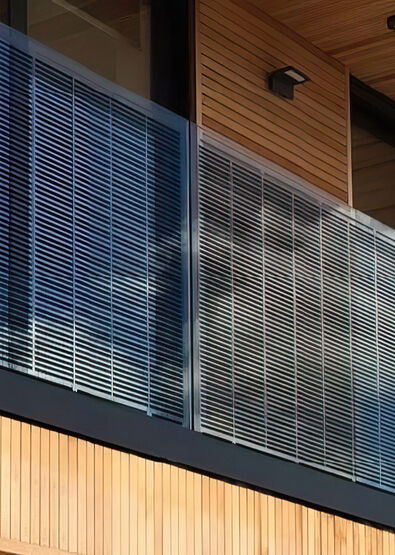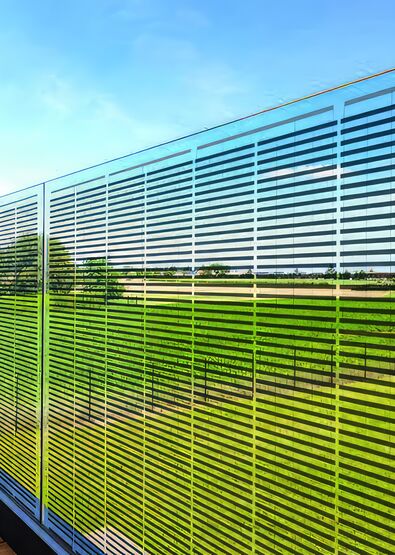CONNECTOR CONCEALED IN THE SUBSTRUCTURE PROFILE
As always, Glas Marte attaches great importance to an attractive appearance. As a result, the connectors of the photovoltaic system are hidden in the balustrade profile and not in a thick handrail. For this purpose, the profile is provided with appropriate cut-outs and a filigree cover. This means that even the thin «Extralight» handrail can be used if desired, or it can be dispensed with altogether. The all-glass balustrades also meet the highest requirements for photovoltaic glass. The glass can be customised with ceramic screen printing on the outside and in the space between the panes, with all colours, opacities and gloss levels possible without significant loss of performance. In addition, the solar cells can be freely arranged, with the advantage that the parapets are more or less transparent depending on the cell spacing. The strip photovoltaic cells are particularly interesting because they do not appear to be functional glass at first glance.

INSTALLATION IN TWO SIMPLE STEPS
As with all GM RAILING® balustrades, the system is installed in two simple steps. First, the substructure is connected to the building. Then the factory prefabricated glass modules are hung. Once these have been adjusted and fixed, the job is done. Numerous examples already realised show that this is a reliable way of ensuring that the glass is installed without voids or stresses. Photovoltaic systems are currently mostly installed on the roofs of buildings. However, they have a clear disadvantage in winter: their output is reduced due to the low position of the sun. Vertically mounted solar cells - on balcony balustrades, for example - can make up for this deficit and provide the most self-sufficient energy supply possible. They are most productive in the morning and evening hours, when most energy is consumed. Solar panels on balcony parapets are therefore an important step towards environmentally friendly construction.

